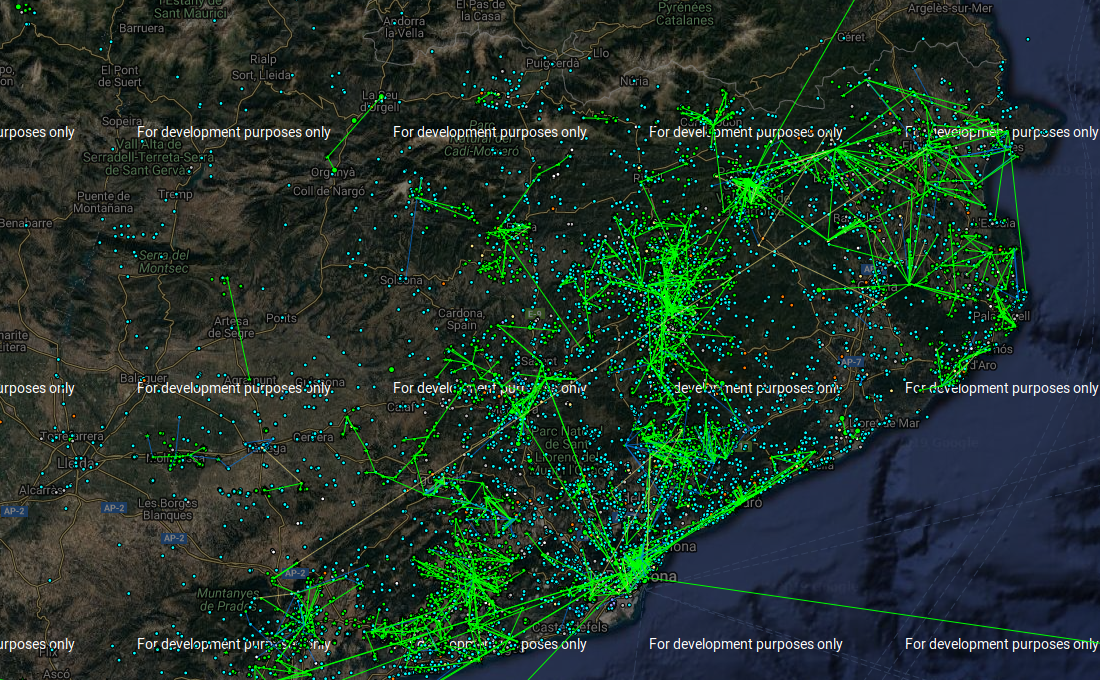6.1 KiB
The meeting in Arago, Barcelona
This is the network graph of guifi.net. A wireless routed layer three network. B.A.T.M.A.N. [1] routing protocol is active, but also OSPF [2] and BGP [3].
Like I've already said guifi is based upon Mikrotik. The stupid little purple bitch, a telecommunications entrepreneur in France, a daughter of military family in Italy, an hacker of systems and people in Spain and a terrorist in the world have used a public exploit to gain access in this free network. The problem is that this free network has got a BGP autonomous system number [4]. The primary exchange ASN is 49835 [5], the data center is the Catalunya neutral Internet exchange [6]. In the same IXP [7] there is others very important connections:
- Adamo [8] 35699 [9]
- ESPANIX [10]
- Andorra Telecom [11] 6752 [12]
- Claranet [13] 8426 [14]
- Cloudfare [15] 13335 [16]
- Google LLC [17] 15169 [18]
- Microsoft [19] 8075 [20]
- Orange Spain [21] 11902 [22]
- RedIRIS [23] 766 [24]
- RIPE NCC [25] 12654 [26]
- Hurricane Electric [27] 6939 [28]
- ISC [29] 1280 [30]
- T-Systems [31] 30892 [32]
- Telefonica de España [33] 3352 [34]
- VeriSign [35] 26415 [36]
In the Orange network but also probably in the Telefonica one hackers gain access to the LTE towers and the passive scanning system for brain waves. The ones that are stimulated by the satellite in 3GHz. Like we've seen.
All the customers premise equipments of Telefonica in FTTH mount the CPE Wan Management Protocol TR-069 [37] soap [38] based message system with the data center to them. And there is a public vulnerability [39], simple to use to exploit the client hardware. Movistar equipment got three virtual lan [40], 2 voice 3 iptv and 6 data. This is the configuration of a router with an ONT:
https://github.com/noplacenoaddress/RouterOS/blob/master/movistar.rsc
PPPoE daemon in the FTTH movistar network serve dynamic public. CWMP daemon it's opened by default over virtual lan 2 and got an access control list [41] with default permissions on deny and accept only a range of public ip from the same provider. Those people with BGP Hijacking [42] have hoped from AS 49835 to various more. 1280 could significance a very dangerous dns cache poisoning [43], 6752 the thief of bank accounts of big facilities, 3352 and 11902 construction of an enormous ddosnet and thief of social network profiles but also access to the passive scanning embedded on the mobile towers.
External links
- https://en.wikipedia.org/wiki/B.A.T.M.A.N.
- https://en.wikipedia.org/wiki/Open_Shortest_Path_First
- https://en.wikipedia.org/wiki/Border_Gateway_Protocol
- https://www.inetdaemon.com/tutorials/internet/ip/routing/bgp/autonomous_system_number.shtml
- https://www.peeringdb.com/asn/49835
- https://www.catnix.net/
- https://en.wikipedia.org/wiki/Internet_exchange_point
- http://www.adamo.es
- https://www.peeringdb.com/net/1989
- http://www.espanix.net
- https://www.andorratelecom.ad
- https://www.peeringdb.com/net/14854
- http://www.clara.net
- https://www.peeringdb.com/net/116
- https://www.cloudflare.com
- https://www.peeringdb.com/net/4224
- https://about.google/intl/en/
- https://www.peeringdb.com/net/433
- https://www.microsoft.com/nl-nl/
- https://www.peeringdb.com/net/694
- https://www.orange.es/
- https://www.peeringdb.com/net/11902
- http://www.rediris.es
- https://www.peeringdb.com/net/2813
- https://stat.ripe.net/widget/looking-glass
- https://www.peeringdb.com/net/621
- http://lg.he.net
- https://www.peeringdb.com/net/291
- https://www.isc.org
- https://www.peeringdb.com/net/1111
- https://www.t-systems.es
- https://www.peeringdb.com/net/10653
- www.telefonica.es
- https://www.peeringdb.com/net/12709
- http://www.verisign.com/rirs
- https://www.peeringdb.com/net/9897
- https://en.wikipedia.org/wiki/TR-069
- https://en.wikipedia.org/wiki/SOAP
- https://www.defcon.org/images/defcon-22/dc-22-presentations/Tal/DEFCON-22-Shahar-TaI-I-hunt-TR-069-admins-UPDATED.pdf
- https://en.wikipedia.org/wiki/Virtual_LAN
- https://en.wikipedia.org/wiki/Access-control_list
- https://en.wikipedia.org/wiki/BGP_hijacking
- https://en.wikipedia.org/wiki/DNS_spoofing
